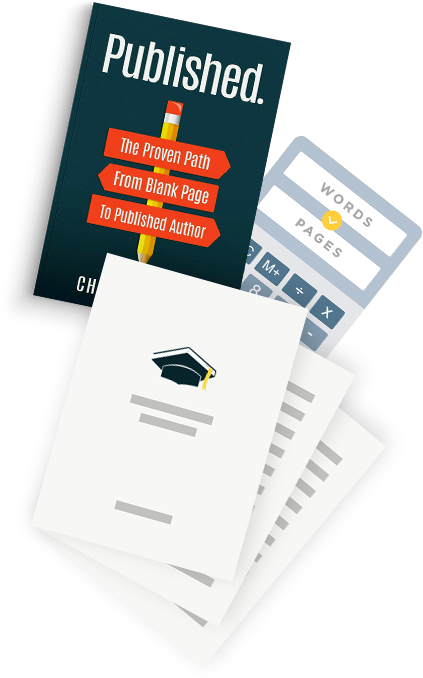Are you curious about the timeless written art form known as poetry?
Many of us encounter the beauty of poetry early in life, often through school. Sadly, we eventually lose our familiarity with poetry and its unique way of expressing truth through language in a beautiful and memorable style.
If you want to rediscover the joy of poetry, you’re in the right place!
We’ve gathered over 50 types of poetry for you. Feel free to delve deeper into any of these types, either from the perspective of a poet or an admirer of verse.
This guide delves into various types of poetry, including:
- What is poetry?
- What are the different types of poetry? (51 types!)
- What is meter in poetry?
- What is a stanza?
- What are rhyme schemes?
Let’s begin with a basic definition of poetry.
What is poetry?
Poetry is a form of written art that uses aesthetic and rhythmic qualities of language to evoke meaning and emotion.
It’s a type of creative writing that can explore anything from the profound to the mundane, often in a condensed and impactful way.
What are the different types of poetry?
If you happen to be a casual admirer of poetry, it may be something that you recognize when you hear it, without being able to articulate exactly how one type differs from another.
If that sounds familiar, please don’t worry!
We’ve gathered together over 50 different types of poetry from around the world along with a simple explanation for each.
Read on to discover the rich variety of poetry types we have to enjoy and attempt to craft our own poems around.
Here is a list of some of the most commonly recognized types of poetry:
1. Sonnet: A 14-line poem with a specific rhyme scheme. There are two main types: the Italian (Petrarchan) sonnet and the English (Shakespearean) sonnet.
2. Haiku: A traditional Japanese poem consisting of three lines with a 5-7-5 syllable count.
3. Tanka: Another form of Japanese poetry, this one has five lines with syllable counts of 5-7-5-7-7.
4. Ghazal: A form of Arabic poetry, traditionally expressing the theme of love, loss, and romantic longing.
5. Ode: A formal, often ceremonious type of lyric poetry that addresses and often celebrates a person, place, thing, or idea.
6. Villanelle: A 19-line poem with a highly specific structure and rhyme scheme.
7. Sestina: A complex, 39-line poem that involves the intricate repetition of end-words in six stanzas and a three-line envoi.
8. Pantoum: Originated in Malaysia in the 15th century, a pantoum is a poem of any length, composed of four-line stanzas.
9. Epic: A long, narrative poem that tells the tale of a heroic figure.
10. Ballad: A narrative poem that is meant to be sung, typically telling a story.
11. Limerick: A humorous, often rude poem of five lines, with a specific rhyme scheme (AABBA).
12. Free Verse: Poetry that doesn’t adhere to a regular meter or rhyme scheme.
13. Blank Verse: Unrhymed iambic pentameter, often used in dramatic verse.
14. Acrostic: A poem where the first, last, or other letters in a line spell out a particular word or phrase.
15. Concrete (or Shape) Poetry: Poetry that is laid out on the page to visually represent its subject.
16. Elegy: A poem of serious reflection, usually a lament for the dead.
17. Cinquain: A five-line poem that was Americanized by Adelaide Crapsey and based on Japanese haiku and tanka.
18. Diamante: A seven-line poem set up in a diamond shape.
19. Quatrain: A four-line stanza or a four-line division of a sonnet marked off by its rhyme scheme.
20. Rondeau: A short poem consisting of fifteen lines that have two rhymes throughout.
21. Terza Rima: A type of poetry consisting of 10 or 11 syllable lines arranged in three-line “tercets”.
22. Kyrielle: A French form of rhyming poetry written in quatrains (a stanza consisting of 4 lines), and each quatrain contains a repeating line or phrase as a refrain.
23. Epigram: A pithy, often witty, poem.
24. Clerihew: A whimsical, four-line biographical poem invented by Edmund Clerihew Bentley.
25. Triolet: An eight-line rhyming stanza of a poem.
26. Couplet: Two lines of verse that usually rhyme and form a unit alone or as part of a poem.
27. Horatian Ode: A short lyric poem written in two or four-line stanzas, each with its individual rhyme pattern.
28. Pastoral: A poem that depicts rural life in a peaceful, romanticized way.
29. Lyric: A poem that expresses personal emotions or feelings, typically spoken in the first person.
30. Dramatic Monologue: A poem written in the form of a speech of an individual character to an imaginary audience.
31. Ekphrasis: A vivid, often dramatic, verbal description of a visual work of art, either real or imagined.
32. Epithalamium (or Epithalamion): A song or poem in honor of a bride and bridegroom.
33. Prose Poetry: A hybrid genre that shows attributes of both prose and poetry. It may appear as prose, but reads like poetry.
34. Visual Poetry: A type of poetry in which the visual arrangement of text, images, and symbols is important in conveying the intended effect of the work.
35. Ghazal: A form of amatory poem or ode, originating in Arabic poetry. A ghazal may be understood as a poetic expression of both the pain of loss or separation and the beauty of love in spite of that pain.
36. Canzone: Medieval Italian lyric style poetry with five or six stanzas and a shorter ending stanza.
37. Aubade: A love poem which is specifically written in the early morning hours, or about two lovers parting at dawn.
38. Chant Royal: Complex French form of ballad, usually in five eleven-line stanzas and a five-line envoy, with a rhyme scheme.
39. Found Poetry: A type of poetry created by taking words, phrases, and sometimes whole passages from other sources and reframing them by making changes in spacing and lines, or by adding or deleting text, thus imparting new meaning.
40. Senryu: A Japanese form of short poetry similar to haiku in construction: three lines with 17 or fewer total syllables, but tends to be about human foibles while haiku tends to be about nature, and senryu are often cynical or darkly humorous while haiku are more serious.
41. Light Verse: A variety of poetry meant to entertain. It often has a satirical or humorous tone, such as a limerick or a clerihew.
42. Etheree: A poem of 10 lines in which each line contains one more syllable than the last.
43. Nonet: A nine-line poem. The first line has nine syllables, the second line eight syllables, the third line seven syllables, etc., until line nine finishes with one syllable.
44. Triolet: A poem of only 8 lines, with a rhyme scheme of ABaAabAB.
45. Tercet: A stanza of poetry with three lines.
46. Epitaph: A brief poem inscribed on a tombstone praising a deceased person, usually with rhyming lines.
47. Epyllion: A brief narrative work in poetry or prose, usually describing romantic or mythological themes.
48. Mock-Epic/Mock-Heroic: A parody of the traditional epic.
49. Hymn: A religious song or poem of praise to God or a god.
50. Madrigal: A lyric poem that is meant to be sung and is both complex and often pastoral in nature.
51. Blackout poetry: Poems created by obscuring existing words and phrases on a printed text.
What is meter in poetry?
Have you ever wondered what gives a poem its rhythm? That’s what we call meter in poetry. It’s a pattern of stressed and unstressed syllables in a line. It’s not always there in every poem, but when it is, you can feel it, almost like a pulse.
So why does meter matter? The rhythm it creates helps to guide how we read and interpret a poem. It sets the pace, adds emphasis, and can even enhance the poem’s mood. In short, meter can be a powerful tool in the poet’s arsenal.
Now, let’s look at some examples, starting with Shakespeare.
His work often uses a type of meter called iambic pentameter, which has five pairs of unstressed and stressed syllables. Take this line from one of his sonnets:
“Shall I compare thee to a summer’s day?”
Shakespeare
Notice the rhythm? That’s iambic pentameter.
Another type of meter is the anapestic meter, which has two short syllables followed by a long one.
A line from Lord Byron’s “The Destruction of Sennacherib” shows this in action:
“The Assyrian came down like the wolf on the fold.”
Lord Byron
Listen to the rhythm there? It’s almost like a gallop. That’s the purpose of meter in poetry—it adds musicality to the words and makes the poem feel vibrant.
What is a stanza?
A stanza, in poetry, is like a paragraph in prose. It’s a grouped set of lines within a poem, usually set off from other stanzas by a blank line. Stanzas can have a consistent number of lines, or they can vary throughout the poem, depending on the poet’s intention.
For example, a couplet is a two-line stanza, often with a rhyme. A tercet is a three-line stanza, like in a haiku. A quatrain is a four-line stanza, frequently seen in ballads and hymns. Sonnets, on the other hand, often use a sestet, a six-line stanza, and an octave, an eight-line stanza.
What are rhyme schemes?
Rhyme schemes are the patterns of end rhymes in a poem, mapped out with letters for each line’s sound. They can give a poem structure and musicality, and sometimes even reinforce the poem’s theme.
Here are five common rhyme schemes:
1. AABB: This scheme rhymes the first two lines with each other, and the next two lines with each other. Example: “Twinkle, twinkle, little star, How I wonder what you are. Up above the world so high, Like a diamond in the sky.”
2. ABAB: This scheme rhymes the first and third lines with each other, and the second and fourth lines with each other.
3. ABCB: The second and fourth lines rhyme in this scheme.
4. ABBA: This is called an “envelope” rhyme, where the first and last lines rhyme, and the second and third lines rhyme.
5. ABA: This is a chain rhyme where the second line of each stanza rhymes with the first and third lines of the next stanza.
Do you dream of publishing your own book of poetry?
No matter what type of poetry you want to share with the world, whether inspirational poetry or haiku or anything in between, we can help you make it happen.
We’d be honored to be a part of your journey from aspiring lyricist to published poet.
The resource below will help you turn weak verbs into strong verbs in your poems. If you’d like to find out more about how we can help, book a call with our team.



